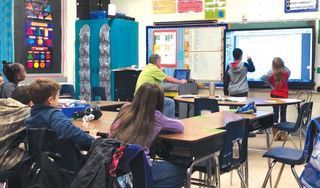
As the traditional definition of literacy expands and deepens, today’s students are learning new ways to communicate and collaborate. They need to be able to read, write, code, analyze data, and evaluate sources. They also need to know how to be good digital citizens and invest in positive relationships. Educators are learning new skills, too, as they teach and model these interconnected areas of literacy: reading, media literacy, digital literacy, and social-emotional literacy.
READING: CHANGING THE CONVERSATION
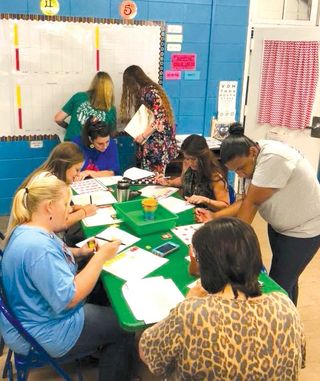
The foundation for literacy, in all its forms, is reading. And building a strong reading program begins with teachers who are engaged learners themselves. Thanks to edtech, “The conversation around learning has really changed,” says Dr. Lundy Brantley, superintendent of Neshoba County School District. Professional Learning Communities (PLCs) have become a “way of life” in this rural district in east-central Mississippi with 68 percent free and reduced lunch. The culture, he says, has changed to one of high expectations. For the first time in its history, in September 2018 Neshoba Central Elementary was rated an “A” school based on Mississippi’s A–F accountability system.
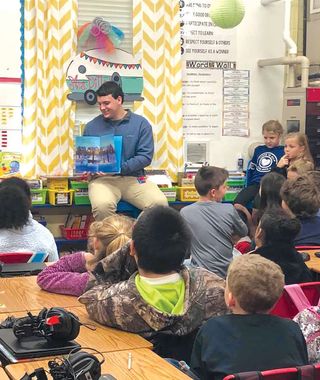
Brantley credits Neshoba’s elementary principal, Tiffany Plott, with initiating some of these conversations that are transforming the district. “Teachers are meeting in their PLCs, some every day, and talking about individual student learning and data points,” Plott says. “They’re building trust and recognizing that shared success depends on sharing ideas.” And Neshoba’s 3,3000 students in grades K – 12 are the beneficiaries.
When Plott arrived from a more affluent district five years ago, she ordered Chromebooks and carts for the school, which is now 2:1 in K–1 and 1:1 in grades 2–5. Brantley, who’s in his second year at Neshoba, says that between a fantastic tech director and increased bandwidth, “everyone now has access to everything we have.” This investment in bringing opportunities for digital literacy to students in rural communities has paid off with huge dividends, he says. Because students are now able to create, analyze, and utilize edtech, they’ve grown, for example, over 40 proficiency points in science.
A Robust Tool and Enthusiastic Learners
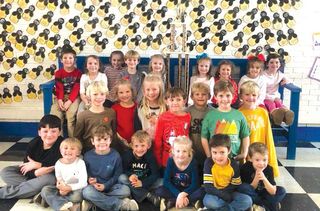
With passionate teachers, edtech tools, and i-Ready, Neshoba students have also made huge strides in reading. The district chose i-Ready because of its diagnostic pretests, personalized learning paths, interventions, and embedded help. “I love the teacher toolbox, instructional games and strategies, and reports with data that pinpoint exactly where we need to go to get a child to grade level, says Plott. “Other programs give lots of practice, but not instruction.” Teachers appreciate these tools and knowing exactly how to remediate and enrich.
But literacy rates at Neshoba have improved because students have also caught the enthusiasm of this culture of transformation. “The kids love it,” Plott says, and incentives like four-foot trophies that the two classrooms who are the i-Ready champs in math and reading win for the week help spur competition, collaboration, and learning. “We take their picture, announce it on Facebook, and the kids even put the trophy on their table in the lunchroom,” says Brantley. “The conversation has changed for kids and parents too.”
If there’s one picture of literacy that’s worth a thousand words, it might be a photo of two eight-year-olds working together at an interactive panel, critiquing each other’s work. Brantley’s voice brims with pride as he describes this moment of shared learning and collaboration.
MEDIA LITERACY: A SUBSET OF DIGITAL CITIZENSHIP

In its broadest sense, media literacy is the ability to access, analyze, evaluate, and create media. Students need to learn to look at URLs, for example, and determine the safety and reliability of sources. With the prevalence of 1:1 programs, media literacy is no longer the sole province of librarians teaching standalone lessons about staying safe online. The conversations need to be broader and deeper, and Nancy Battaglia, Director of Technology for Skokie (IL) School District 68, sees media literacy as a subset of the overarching theme of digital citizenship.
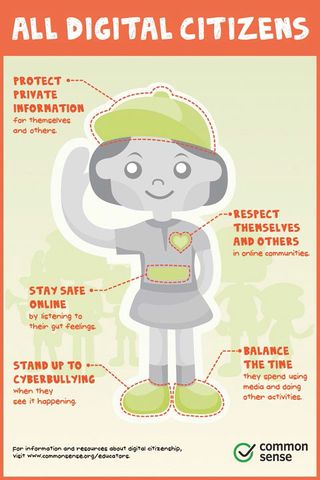
In a rapidly evolving digital landscape, definitions can be slippery. The term “digital citizenship” has come into use over the past decade, and at Skokie, a pre-K–8 district of 1,900 students, Battaglia and others are working on a simple working definition for the district. Common Sense Education’s infographic below is a helpful starting point with younger students, as are the writings of Mike Ribble, who combines the elements of digital citizenship into three areas: educate, protect, and respect. Increasingly, balancing screen time is also a component of being a good digital citizen.
In a very real sense, however, as technology becomes more intricately intertwined with everything we do, Battaglia says there’s a case to be made for calling digital citizenship just “citizenship.” Media literate students are those who can think critically and comport themselves with wisdom, care, and concern for others—onscreen and off.
Simplifying and Embedding
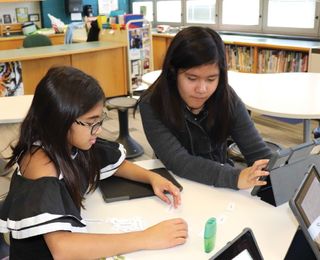
Rather than trying to create an all-encompassing scope and sequence to teach digital citizenship, Battaglia suggests simplifying and embedding the concepts into everyday conversations—in the classroom with students, but also among educators. “Often,” she says, “teachers are already teaching digital citizenship—talking with students about not using their last names online, for example—without realizing that’s what they’re doing.” Starting the conversations with young students is important, she says, so good digital citizenship becomes a natural part of their positive, discerning approach to all interactions online.
Celebrating Digital Citizenship Week each October is a great way to start the year and to make sure that new teachers are all on board and part of the process. Online resources abound, including those from ISTE, Common Sense Media, BrainPop, and Google. Battaglia also recommends using instructional and technology coaches and librarians as resources in addition to capitalizing on real-life examples of situations and questions as learning experiences for all.
Educating parents as part of this cultural shift is also key, she says. Parents need resources to help them make decisions about how their children use district technology at home. Parents also have a key role to play modeling good online behavior.
Practicing Discernment
Some parents have been surprised, Battaglia says, by their district policy not to block YouTube. “We explain that, in the real world, YouTube is not going to be blocked. Students use YouTube to learn to make things and learn new skills—there are so many good parts, and so instead of blocking it we need to teach students to use sites like that safely.” See Battaglia’s presentation on digital citizenship at the 2018 T&L Leadership Summit here: https://spark.adobe.com/page/RHdITYp4WJ1wQ/
FOSTERING DIGITAL LITERACY THROUGH DISCOVERY, DISRUPTION, AND INNOVATION
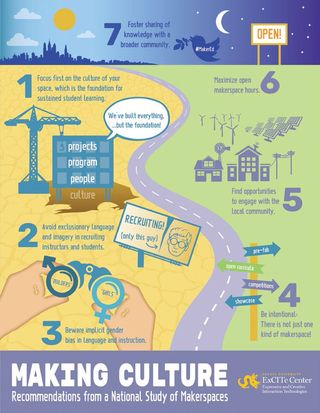
Philadelphia, the fifth-largest city in the US, is a city of neighborhoods, strong community, and connectedness. And although the Declaration of Independence, which asserts equality for all, was adopted here, like most cities today Philadelphia faces challenges to ensure that there are equal digital opportunities and access for everyone.
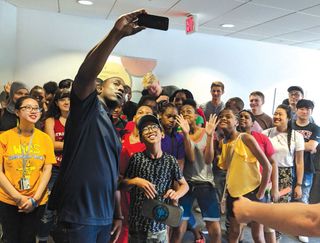
Andrew Stutzman is one of many passionate and innovative educators seeking to advance digital literacy in creative ways and in multiple contexts throughout the city. Stutzman’s leadership roles have morphed over the years as he works to ensure equality in the dynamic tech landscape—from providing free computer lab access through the KEYSPOT network to various initiatives connecting educators, employers, and students. The common thread of his involvement with projects like Drexel University’s Expressive and Creative Interaction Technologies (ExCITe) Center, the Technology Learning Collaborative (TLC), Digital On-Ramps, and LRNG Philly, is digital literacy training for all. These projects demonstrate how digital literacy can transform communities. They’re also resource-rich examples for educators seeking to promote digital literacy in their own districts and community contexts.
The ExCITe Center
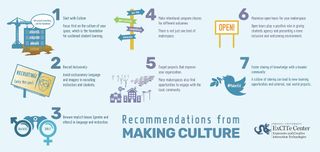
The ExCITe Center accomplishes its mission, “to inspire transdisciplinary research and discovery connecting technology and communities,” through novel projects as diverse as an entrepreneurial game studio, 3D knitting machines, and Summer STEAM programs where students can participate in unique arts-science learning activities exploring, for example, the science behind music, the engineering behind sneaker design, and the intersections between visual art and geometry and biology and dance.
ExCITe’s STEAM workshops for teachers, with keynote speakers and presentations as well as hands-on workshops, promote computer science by providing busy teachers with professional development opportunities, resources, and skills to implement proven initiatives in their classrooms.
The ExCITe Center also conducted a year-long, in-depth exploration of makerspaces across the country. Its report, Making Culture, highlights how important student interest, real-world relevance, and community collaboration are to learning. The study also revealed the very real gaps in inclusion in STEM education and formulated recommendations for addressing them. Another goal of the ExCITe Center, Stutzman says, is to offer more professional development for teachers on creating, maintaining, and integrating makerspaces.
LRNG Philly
LRNG, which recently merged with Southern New Hampshire University, is another organization working in Philadelphia and other cities across the country to address workforce needs and increase low-cost or free access to learning pathways for all youth. Their urban ecosystem approach focuses on low-income populations and seeks to identify and meet educational needs in each city.
Beyond knowing how to use a computer to perform basic office skills, Stutzman says, one of the key components of 21st-century digital literacy is knowing how to work with data. Financial literacy is another important area as, for example, students fill out college applications. Community partnerships through LRNG enable youth to connect learning experiences to career and higher education opportunities through mentoring and earning digital badges, internships, and scholarships.
Equality for All Digital Natives
Digital inclusion, Stutzman says, always needs to be part of the conversation about digital literacy. While broadband penetration is about 83 percent across the country, it’s still only 71 percent in Philadelphia and as low as 37 percent in the poorest areas. That’s why programs like CS4PHILLY (part of the national CS for All consortium), which sponsors major events to promote and expose high-school students to technology, are so important.
At a recent holiday event for the homeless, the TLC provided technology including iPads and laptops for the kids to use. “Every device was in use the whole time,” Stutzman says. “Everyone knew what they wanted to do and how to use the device to do it. There were no questions.” Students who don’t have the kind of tech access that their peers do still took to it like fish to water. “That was really encouraging,” Stutzman says. Imagine what they could do if they had such equal opportunities every day.
SOCIAL-EMOTIONAL LITERACY: PRACTICING PATIENCE, KINDNESS, AND OPEN COMMUNICATION
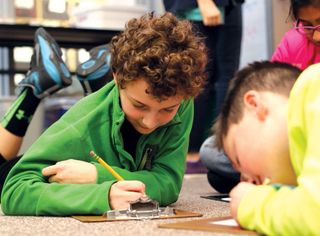
Unless our students who know how to read, write, and solve math problems also master the skills necessary to manage their emotions, set goals, make decisions, show empathy, and invest in positive relationships, they will not be fully “literate” members of the workforce and society. Social-Emotional Learning, or SEL, is a rapidly growing field in education and Randi Peterson, an SEL curriculum developer in Bellevue (WA) School District, explains that it needs to begin with adults.
Helping to equip every adult who has an impact on children—teachers, but also other school personnel, coaches, after-school program facilitators, and parents—with their own SEL skills is critical for teaching and modeling SEL. But even positive change can be difficult. Sometimes, for example, it’s a challenge to get parents on board. They might say, “We didn’t talk about feelings in my family.” And because it’s relatively new as a curriculum area, teachers who may have grown up learning SEL implicitly at home or in their community need to be supported as they build a mindful capacity to teach SEL. “It’s more than a content area—and it’s a learning curve,” Peterson says. Patience, kindness, and open communication are key.
Another key to integrating SEL into the curriculum successfully, Peterson says, is triangulating multiple data points. Bellevue uses various tools to gather data. Aperture’s DESSA helps to build the kind of picture of a student’s needs that enables educators to target instruction, and the Panorama Student Survey captures students’ voices in areas like student engagement, pedagogical effectiveness, school climate, and safety.
A Framework for Talking about Feelings
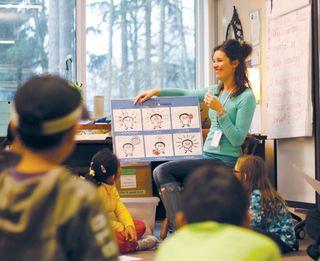
Bellevue began their journey focusing on SEL as an academic area in 2011. The district adopted the five core competencies set out by the Collaborative for Academic, Social, and Emotional Learning (CASEL): self-awareness, self-management, social awareness, relationship skills, and responsible decision making. This framework, Peterson says, gives adults and students a common language for talking about feelings and mindful decisions as well as what she calls “SEL opportunities” in unstructured and sometimes stressful environments like the playground, cafeteria, or school bus. Washington is now one of CASEL’s collaborating states and has also instituted state-wide SEL standards and benchmarks (competencies).
At the elementary level, Bellevue is using evidence-based curricula, including Second Step (grades K–2) and The RULER Approach (grades 3–5). Peterson acknowledges that SEL is more easily and naturally integrated into elementary classrooms where teachers spend the day with a group of students. While there are a few resources available for middle and high schools, it can be a challenge to prioritize SEL intentionally. “We’re explicitly incorporating SEL for our secondary students by utilizing affective statements and questions, talking circles, and community building assemblies, as well as integrating prosocial lessons into content area subjects.” With neighbors like Microsoft, Google, and Amazon, Bellevue hears all the time how crucial these relational skills are in the workplace.
“It’s also critical to develop leaders in SEL,” Peterson says, and Washington’s micro-credential pilot program in SEL is equipping teachers to be leaders among their colleagues. The websites for CASEL (casel.org) and the Greater Good Science Center at UC Berkeley (ggsc.berkeley.edu) offer a wealth of resources as well as conference opportunities for educators.
“It’s complex work that requires a lot of coaching and continuous cycles of improvement,” Peterson says. “But I truly believe it’s the work that we need to be doing.”
